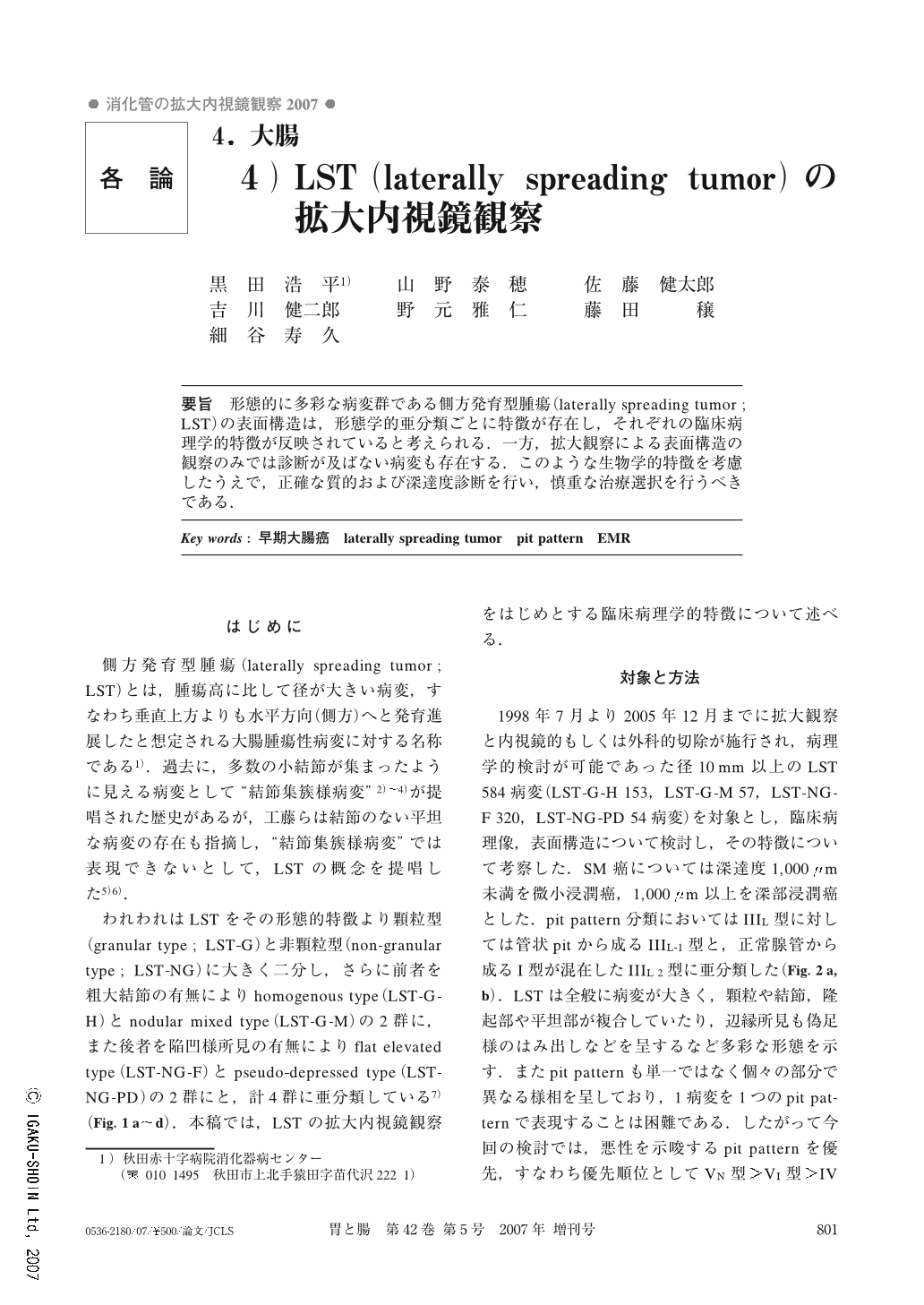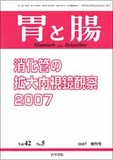Japanese
English
- 有料閲覧
- Abstract 文献概要
- 1ページ目 Look Inside
- 参考文献 Reference
要旨 形態的に多彩な病変群である側方発育型腫瘍(laterally spreading tumor;LST)の表面構造は,形態学的亜分類ごとに特徴が存在し,それぞれの臨床病理学的特徴が反映されていると考えられる.一方,拡大観察による表面構造の観察のみでは診断が及ばない病変も存在する.このような生物学的特徴を考慮したうえで,正確な質的および深達度診断を行い,慎重な治療選択を行うべきである.
From the viewpoint of therapeutic strategies, it is important to diagnose laterally spreading tumors (LST) based on their clinicopathological characteristics. We have proposed that LSTs should be classified into two types according to their morphology, the "granular type (LST-G)" or "non-granular type (LST-NG)". Each type has two sub-groups. The former has the "homogenous type (LST-G-H)" and the "nodular mixed type (LST-G-M)". The latter has "flat type (LST-NG-F)" and the "pseudo-depressed type (LST-NG-PD)".
LST-G-M and NG-PD are higher than the other two types in rates of early carcinomas and submucosal invasive carcinomas. Therefore, it is important to classify LSTs according to morphological type. Also, LSTs which exhibit type IIIL and IV pit patterns should be treated endoscopically, because they are considered to be free of submucosal invasive carcinomas. On the other hand, LSTs which display VN pit patterns should not be treated endoscopically, because they are often submucosally invasive. The problem is that LSTs, which have type VI pit patterns, have a wide variety of pathological features. Therefore, we must carefully choose therapeutic strategies for their treatment.

Copyright © 2007, Igaku-Shoin Ltd. All rights reserved.


